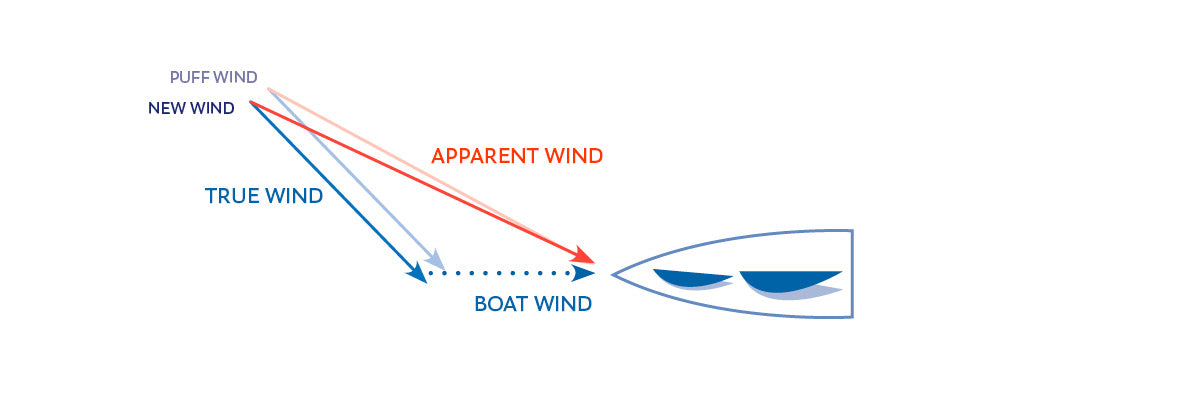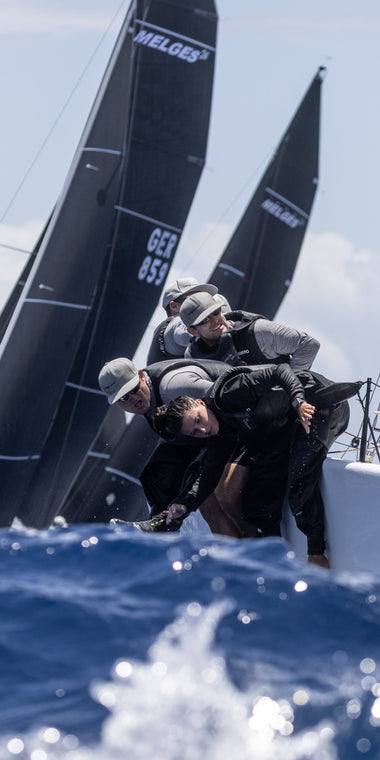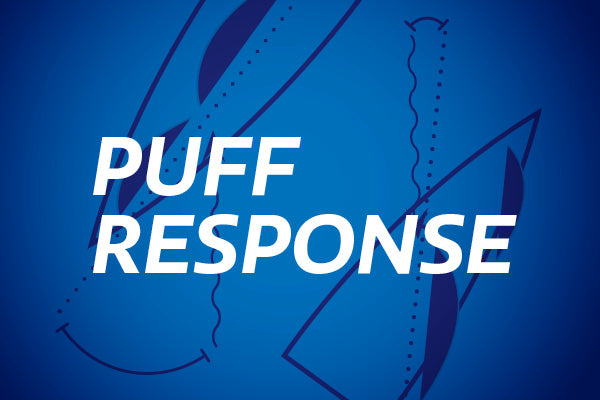PUFF RESPONSE UPWIND
PUFF RESPONSE UPWIND
By Bill Gladstone
Proper response to a puff is critical to optimum performance. The best response is a change in trim to match the changing apparent wind angle. Here’s why:
Apparent Wind
We’ll start with our wind triangle before the puff hits. Figure 1 shows how apparent wind is the vector sum of Boat Wind and True Wind.
Fig. 1: Apparent Wind is the sum of True Wind and Boat Wind.

The Puff Hits
When the True Wind increases (“Puff!”), it creates a stronger Apparent Wind and a wider Apparent Wind Angle. Trimming sails to match this change usually means lowering the traveler, which is the fastest way to maintain a balanced helm and consistent angle of heel.
Fig. 2: A puff results in stronger Apparent Wind and a wider Apparent Wind Angle. Drop the traveler to match the new wind angle.

Acceleration
Once the boat’s helm is balanced again, the boat then accelerates to match the new wind speed. That moves the apparent wind forward, so then we need to re-trim the sails again.
Fig. 3: As the boat accelerates with the new wind, the apparent wind moves forward and we need to trim in again.

Wasted energy
If we don’t change sail trim in response to the puff, its energy is wasted in heeling force and weather helm rather than being turned into acceleration. The boat may eventually accelerate – after making leeway – but by then all of the more responsive crews will have jumped ahead.
Why change trim? Why not just feather the helm?
Trim Response lets you accelerate more quickly. Feathering (heading up, to reduce heel angle) will give you a brief bit of height, but that is usually offset by more leeway. Changing sail trim gives you speed, and speed then gives you height.
Why use the Traveler?
Lowering the traveler reduces angle of attack, which is the preferred trim response on a moderate displacement keelboat. On higher performance boats or multihulls, especially those with square top mains and high aspect keels, it is more effective to ease the mainsheet to adjust twist. On some boats – for example, an Etchells – a big pull on the backstay is very effective.
Some boats use “Vang Sheeting” (where the mainsheet controls angle of attack) and respond to puffs by playing the main.
Which is Best?
Snappy Answer: Whichever is fastest.
Longer Answer: You’ll have to test to see what works best on your boat. As a general rule, Trim Response is preferred to just feathering/ steering through the puff.
This article is from the North U Boat Speed Seminar curriculum. To find a North U Seminar near you visit https://northu.com/types/seminars/



























